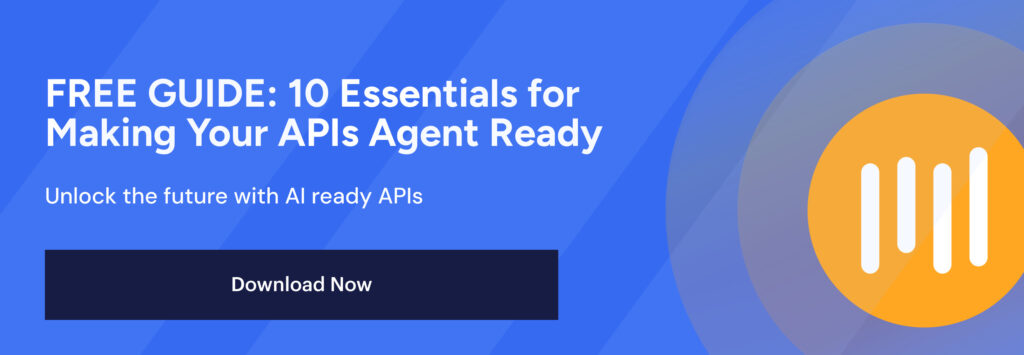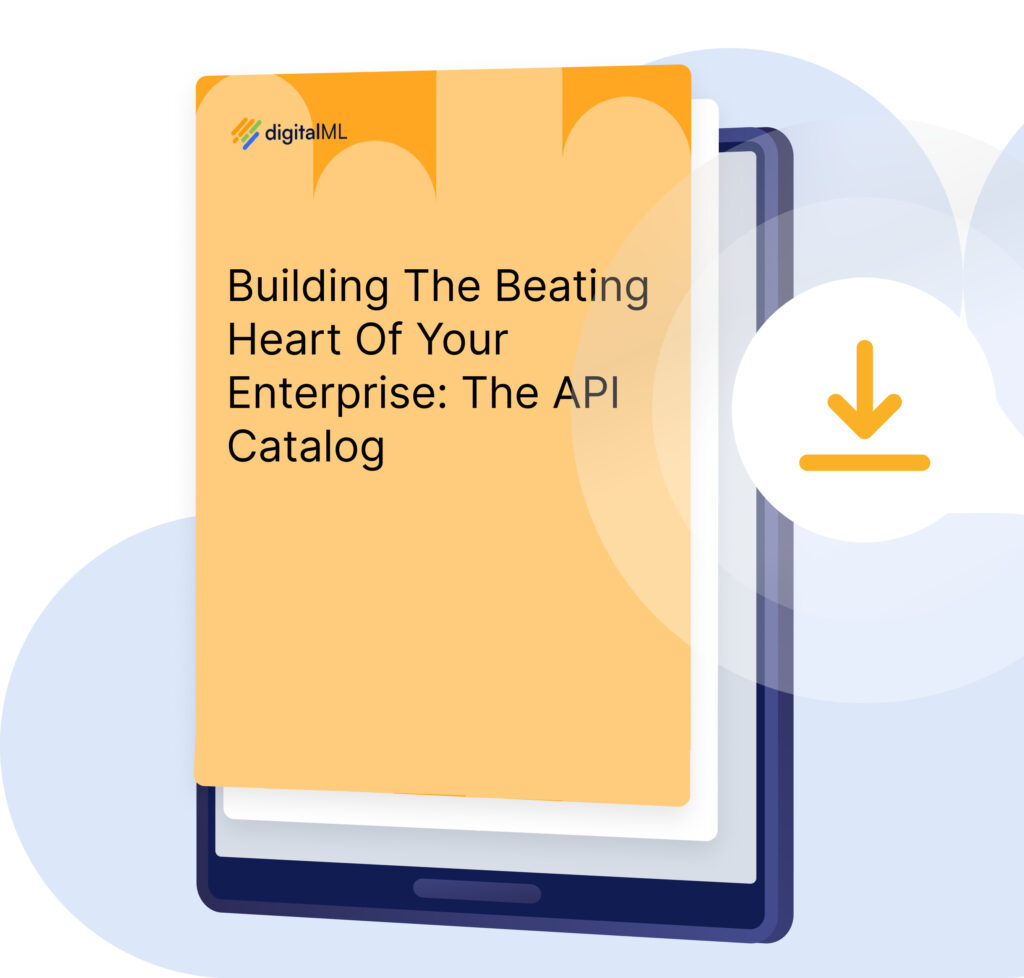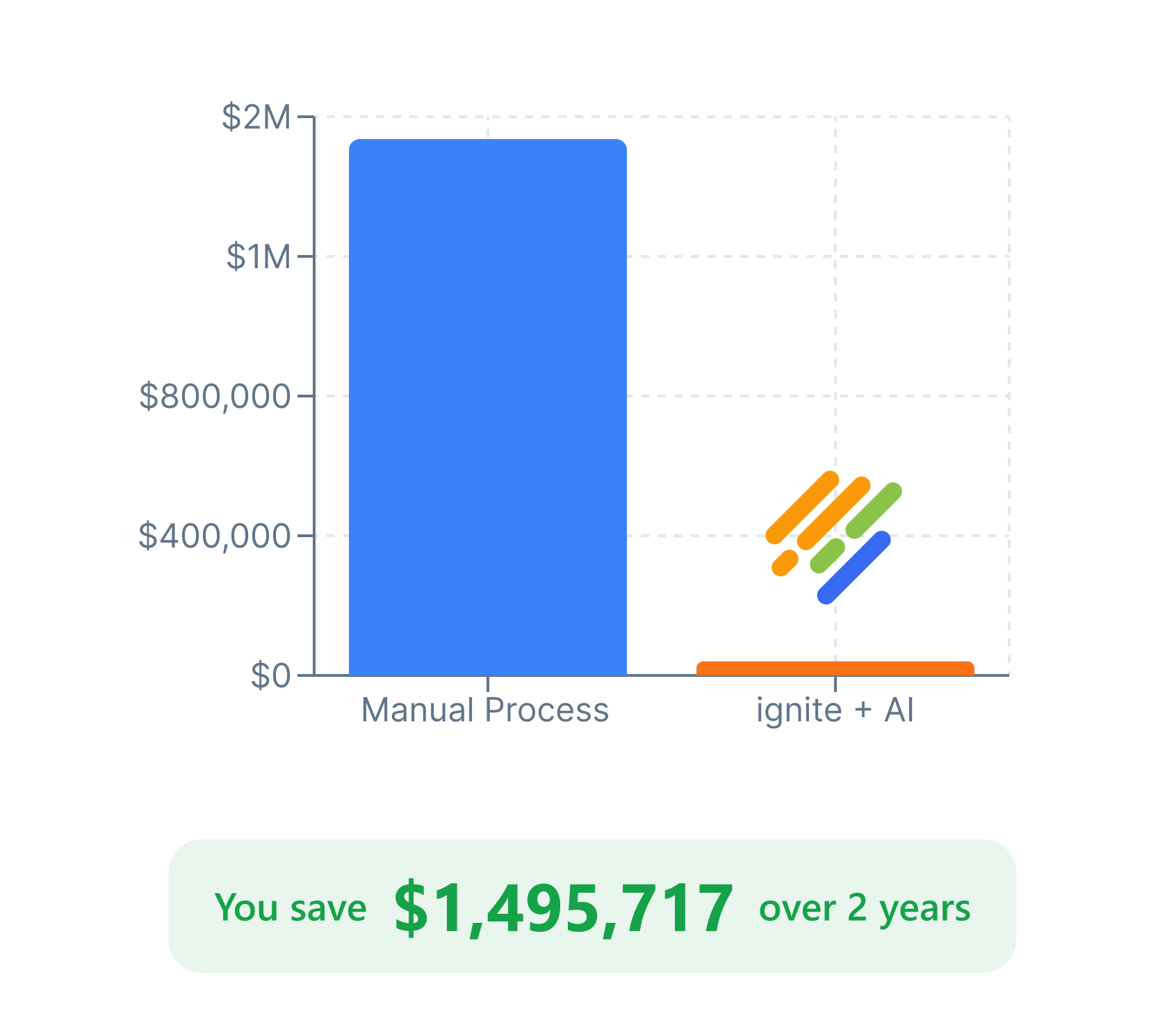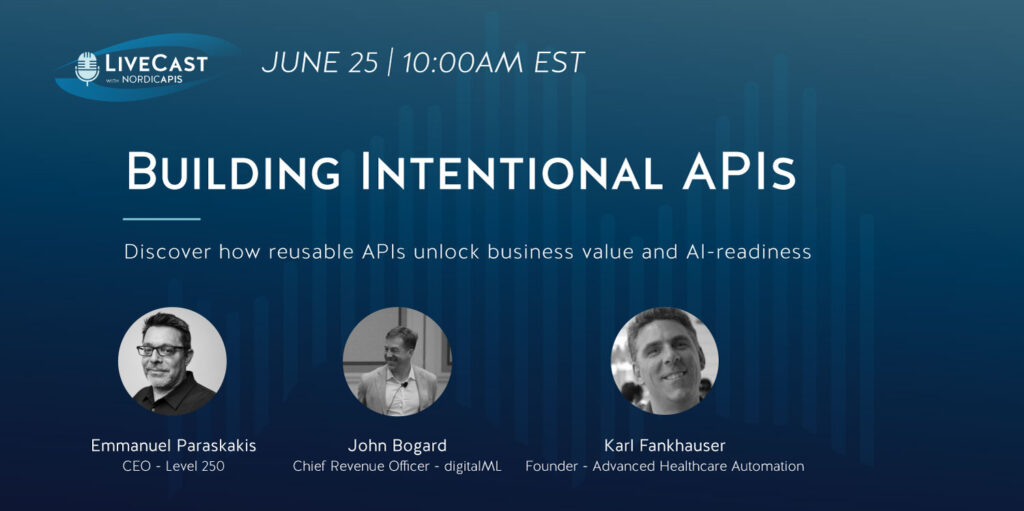9 Signs Your API Portfolio Isn’t Ready for AI Consumption (And How to Fix It)
Key Takeaways
Agentic AI is here to be the top consumer of your APIs. But to be successful, your APIs need to be machine-readable and your wider API management implementation needs to be flexible and optimized to support what comes next. Use these 9 warning signs to identify opportunities for improvement and make APIs AI-ready.
Introduction
Agentic AI is here to help enterprises increase their productivity at scale. 92% of organizations plan to increase their AI investment over the next 3 years. But while nearly all are embracing this new opportunity, only 1% claim they’re mature in their implementation.
A critical unlock is the ability to expose your APIs to AI agents so they can access your data in a controlled manner. But, unlike developers, agents can’t guess, infer, or explore. They require structured, semantically rich, and machine-readable APIs to reason, plan, and act autonomously.
If your APIs aren’t machine-consumable, they’ll block AI-driven innovation. Use these 9 warning signs to assess where your API strategy for AI stands, and learn how to fix things.

AI Agents Demand APIs: Enterprise API Modernization is Needed
AI agents are set to be the biggest consumers of your APIs. According to Gartner:
by 2028, 33% of enterprise software applications will include agentic AI capabilities, meaning AI agents will directly drive API consumption as they begin to operate autonomously within workflows.
But they’re fundamentally different from human developers. They can’t guess, explore, or rely on tribal knowledge. Instead, they require structured, consistent, and machine-readable APIs that deliver complete information. Of course, most enterprise APIs today weren’t built with that level of semantic clarity in mind.
This disconnect is already slowing down enterprise AI initiatives.
Gartner also reports that:
more than 60% of organizations rolling out AI agents identify API readiness and data governance as their top technical roadblocks.
The problem isn’t a lack of APIs, it’s that they aren’t consumable by machines. Legacy endpoints, inconsistent documentation, fragmented catalogs, and weak governance create friction that AI agents simply can’t navigate. As agentic AI adoption accelerates, enterprises need to rethink their API strategy to move beyond developer-centric models towards modern, AI-consumable digital assets.
9 Signs Your APIs Aren’t Ready for AI Consumption
With this in mind, here are 9 warning signs to look for in your current API inventory and overall API management implementation.
1. Your API Documentation Isn’t Designed for Machines
Your API versions lack examples, proper error handling and messages, and rich metadata aligned to standards like the OpenAPI Specification.
Fix this by making docs structured, semantic, and standardized, to provide the clarity and context AI agents need.
2. You’re Creating Separate APIs for Developers and Agents
You’re creating a new version of every API you want to expose to agents, each with their own set of updated documentation. This leads to duplication and inconsistency, increasing API sprawl its resulting chaos in managing the portfolio.
Fix this by serving multiple consumers from one unified API definition that has different views for humans vs machines.
3. Your APIs Are Scattered Across Teams or Tools
Whether developers are building your agentic workflows, or you’re aiming to enable API auto-discovery by agents, you can’t discover what you can’t find.
APIs must be centralized and organized in a vendor-neutral catalog with added lifecycle visibility.
4. You’re Failing to Provide Guardrails to Teams Using Generative AI to Enhance Docs
Generative AI (genAI) is maturing in its ability to enhance API documentation to support AI agents. However, it’s all to easy to expose your organization’s sensitive data to LLMs, and lose consistency via uncontrolled prompt variance.
Instead, automate responsibly with AI prompt standardization and governance, and redact sensitive fields in your APIs before you expose them to genAI tools.
5. You Don’t Have Flexibility To Adapt as AI Trends Evolve
Whether it’s maturing standards like MCP, or implementation questions like whether you need to stand-up specific AI gateways and portals, the market is changing at huge pace right now.
Inflexibility slows experimentation. Focus on keeping architecture adaptable for agentic use cases and choose tooling that will evolve as standards mature.
6. Internal and External AI Agents Get the Same API Access
Uncontrolled exposure to agents increases risk, violates security principles.
To resolve this, enable segmentation and access control for agents.
7. You Can’t Track or Audit Agentic API Usage
You have blind spots in how and where APIs are being used, including performance and security.
Instead, implement advanced reporting such as observability and usage telemetry from the start.
8. API Governance Is Manual or Happens Late in the Process
API governance reviews at deployment is too late for AI safety in this paradigm – LLMs don’t forget.
Fix this by choosing tools that embed compliance alignment and governance rules early in the API lifecycle.
9. Developers Are Burdened with Manual Enhancements
If you’re handing over too many tasks to developers, you’re undoubtedly slowing progress and compromising API quality.
Instead, use expert task forces and automation to scale enhancements across documentation, governance, and lifecycle management.
What Enterprises Can Do Next
Modernizing your APIs for AI isn’t a one-time fix, it gives you strategic advantage. As AI agents become embedded in everything from internal automation to customer-facing services, your organization needs a clear plan to evolve its API portfolio.
Here’s how to get going:
- Conduct an API AI readiness self-assessment to identify which parts of your portfolio are already aligned, and where critical gaps exist.
- Prioritize the APIs that power automation, internal copilots, and external-facing AI workflows. Not every API needs to be AI-ready.
- Centralize API management and metadata augmentation using secure, governed processes. This ensures both discoverability for AI agents and consistency across teams.
The most successful enterprises are already laying this foundation.
Ready to see how your APIs measure up?
Book a readiness assessment with digitalML and start your journey toward a future-proof, AI-ready API strategy.
Conclusion
Agentic AI is here. Enteprises that can quickly modernize their API strategy and portfolio to support agents as a top API consumer will reap the most rewards. Use the warning signs in this blog to identify your gaps now, and prioritize efforts while the space is still evolving.
For deeper insights and examples, download the complete whitepaper:

Your free download includes detailed recommendations, pitfalls to avoid, and how to begin your AI portfolio transformation.
Differentiate Your Digital Enterprise Now
Learn how it can help your enterprise accelerate digital transformation





